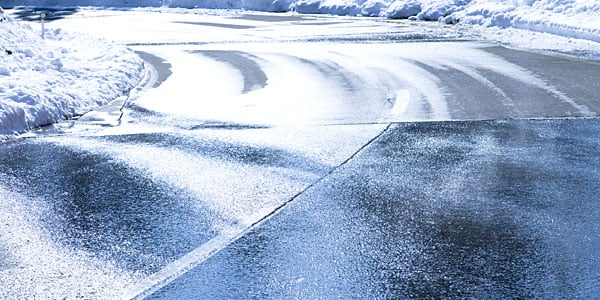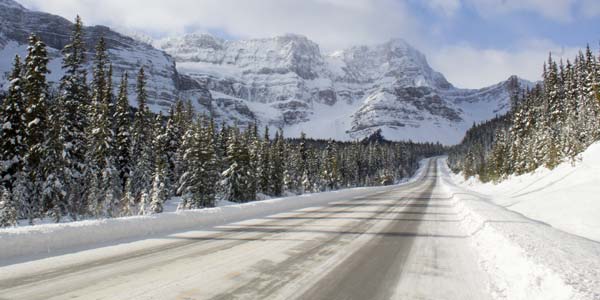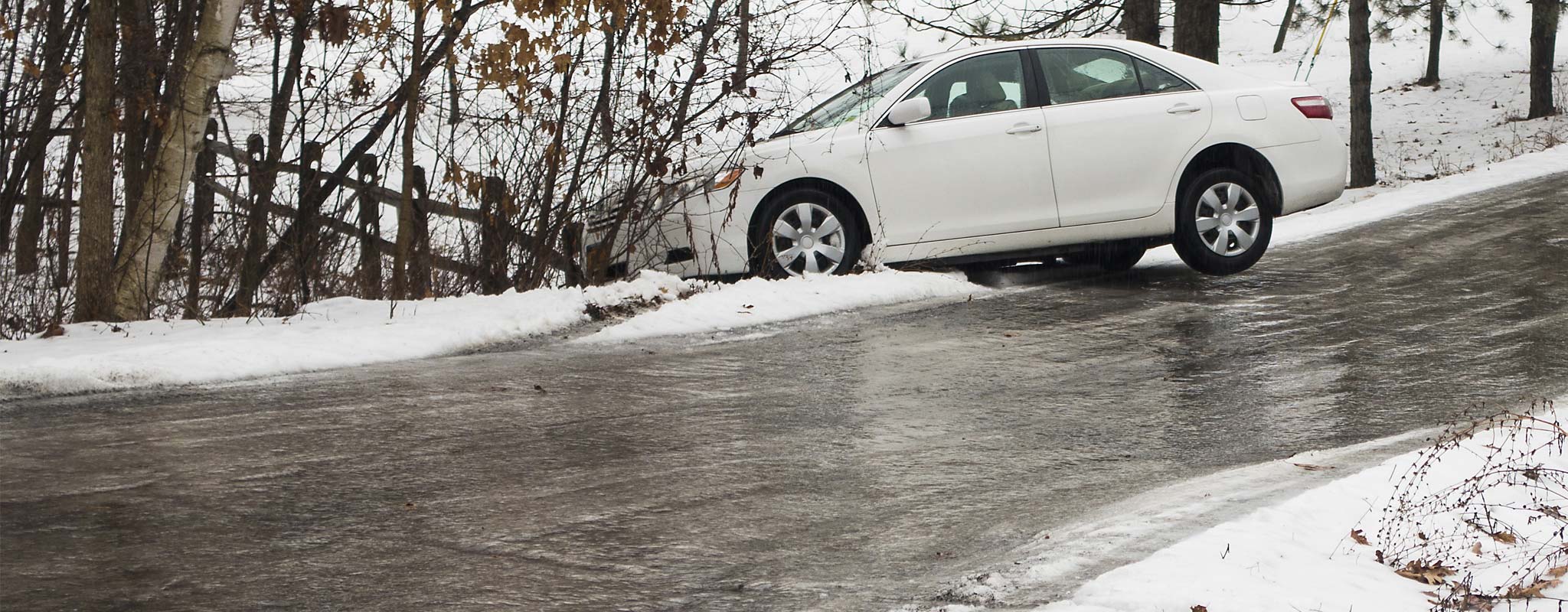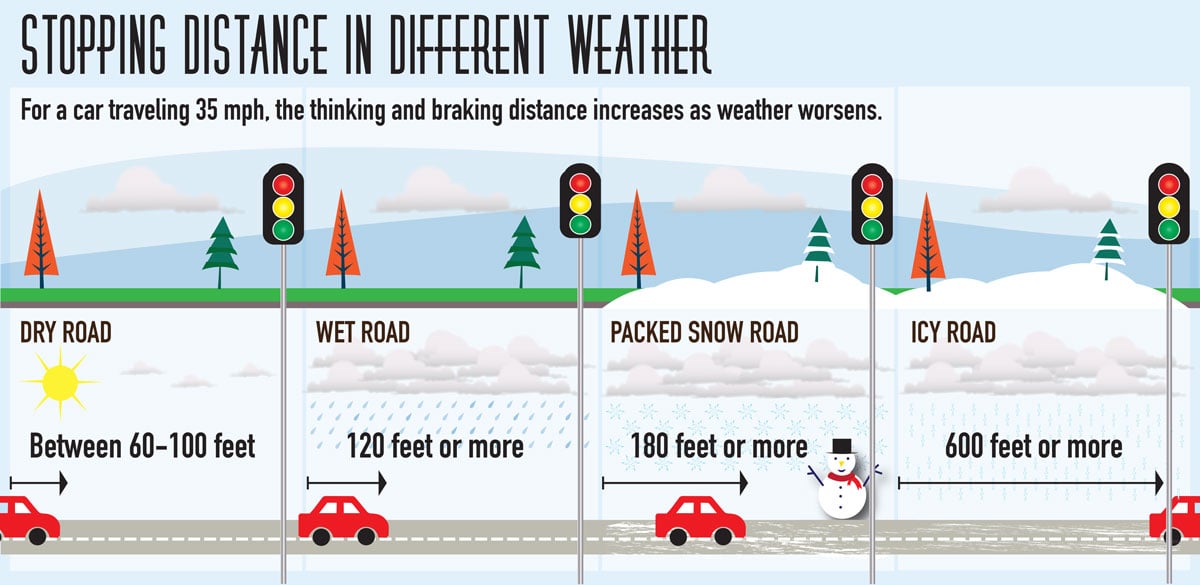How to Drive Safely on Ice: Top Tips for Keeping Your Car on the Road
When icy roadways are involved, the most important thing you can do to avoid an auto accident is not drive at all. Even if you have to reschedule that key meeting at work or delay that trip you’ve had planned for so long, think about staying home when conditions are bad or forecast to get worse.
If you’re caught trying to get somewhere when freezing rain starts and the highway becomes better for hockey than driving, here are 17 general tips for driving safely on black ice and snow. Of course, you should always carefully review your owner’s manual for any warnings, notices, or other advice specific to your vehicle.
17 Tips for Driving on Black Ice or Snow
- Have the right winter tires, properly inflated. Winter tires are worth it, especially if you might be encountering ice. See why in this video that shows stopping ability of winter tires compared to all-season tires.
- Carry chains and if the road gets slick, use them.
- Don’t be overconfident about traction just because you have a four-wheel or all-wheel drive. These vehicles don’t stop or steer better on ice than regular old two-wheel drives. Even snow tires may not give you full traction on ice.
Ease up on the Gas
- Slow way down. If you do go into a skid you’re less likely to do your vehicle or yourself damage.
- Accelerate and apply brakes slowly.
- Increase your following distance. You’ll need ten times the stopping distance compared to what you’re used to on dry pavement.
- Don’t even think about passing other vehicles. And if someone tries to pass you, gently steer to the shoulder as far as you safely can to give more room.
How to Tell If the Road’s Icing Up
- Don’t use your car thermometer as the only judge of how slippery the road is. Air temperature warms quicker than pavement. So even when your thermometer says it’s above freezing the roadway may still be frozen. Look for ice on your wipers, side view mirrors, road signs or trees as other signs that extra caution is needed.
- Avoid driving at night or very early in the morning when it’s coldest.
- You can’t always see ice coming. Black ice is thin ice that actually looks like water on the road. Again, watch for signs of icing up elsewhere and keep these tips in mind when you’re driving on black ice..
- Be extra vigilant on bridges, overpasses and ramps. They’re the first to freeze and the last to thaw. They get colder than asphalt because they’re concrete and there’s no insulation provided by the ground.
- Also be alert when you’re changing elevation. On mountain passes, the worst patches of road are often the icy spots in shaded corners.
- If you notice rain or snow turning to freezing rain while you’re driving, crank the defroster on high. Don’t let ice stick on your windshield. It’s unsafe to try to see through a small part of the windshield and just keep going. Pull over someplace safe and scrape it off. If you’ve purchased a tire from us, you’ll have the advantage of the Les Schwab Tire Warranty, including our no-hassle road hazard protection, a 60-day satisfaction guarantee, and free tire maintenance including flat repairs, rotations, rebalancing, air checks, and our free pre-trip safety check. Find a store near you to take advantage of these safety offerings before you head out on a winter trip.

Avoiding Skidding on Black Ice
- How to drive downhill in slick conditions: if you have anti-lock brakes (ABS) start at the top of the hill as slowly as possible, leaving your vehicle in normal drive gear. Use light, steady pressure on the brake pedal to maintain the right speed. This allows your braking system to maintain traction. If you don’t have ABS, start slowly and keep it slow by lightly pumping the brakes.
- Never use cruise control in icy conditions. It can cause your wheels to spin at different speeds and may make you lose steering control.
- If your vehicle suddenly feels like it’s floating, take your foot off the gas but don’t slam on your brakes, which can cause you to skid.
- The best way to be safe while driving in icy conditions is to be patient. Let vehicles that tailgate you go by and take your time.

Read more in the full series on all you need to know to drive safely on winter roads, including how to avoid hydroplaning, how to drive in snow, and real-time Western winter road conditions by state.
What you need to know

Winter Driving Tips: How to Drive in Snow
When you’re driving on snow or you’re caught in a storm, remember the following winter driving tips for safer vehicle handling.

How to Drive Safely on Mountain Roads
How to drive in the mountains and stay in control when encountering ice and other weather conditions that can impact your safety.

10 Safety Tips for Driving in the Rain
Driving in the rain can be unsafe or even downright dangerous. These safety tips for driving in the rain could help protect you from unwanted accidents.


